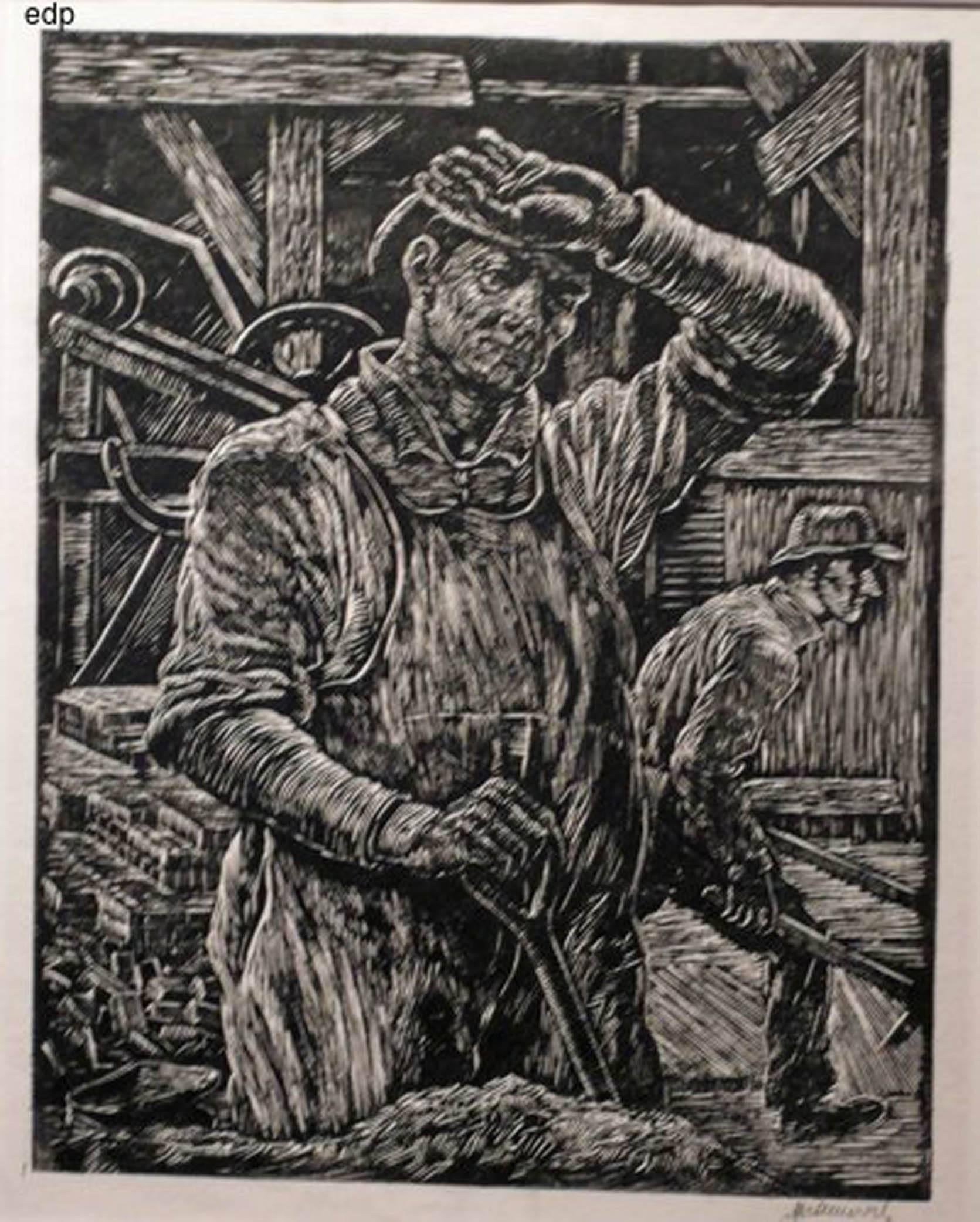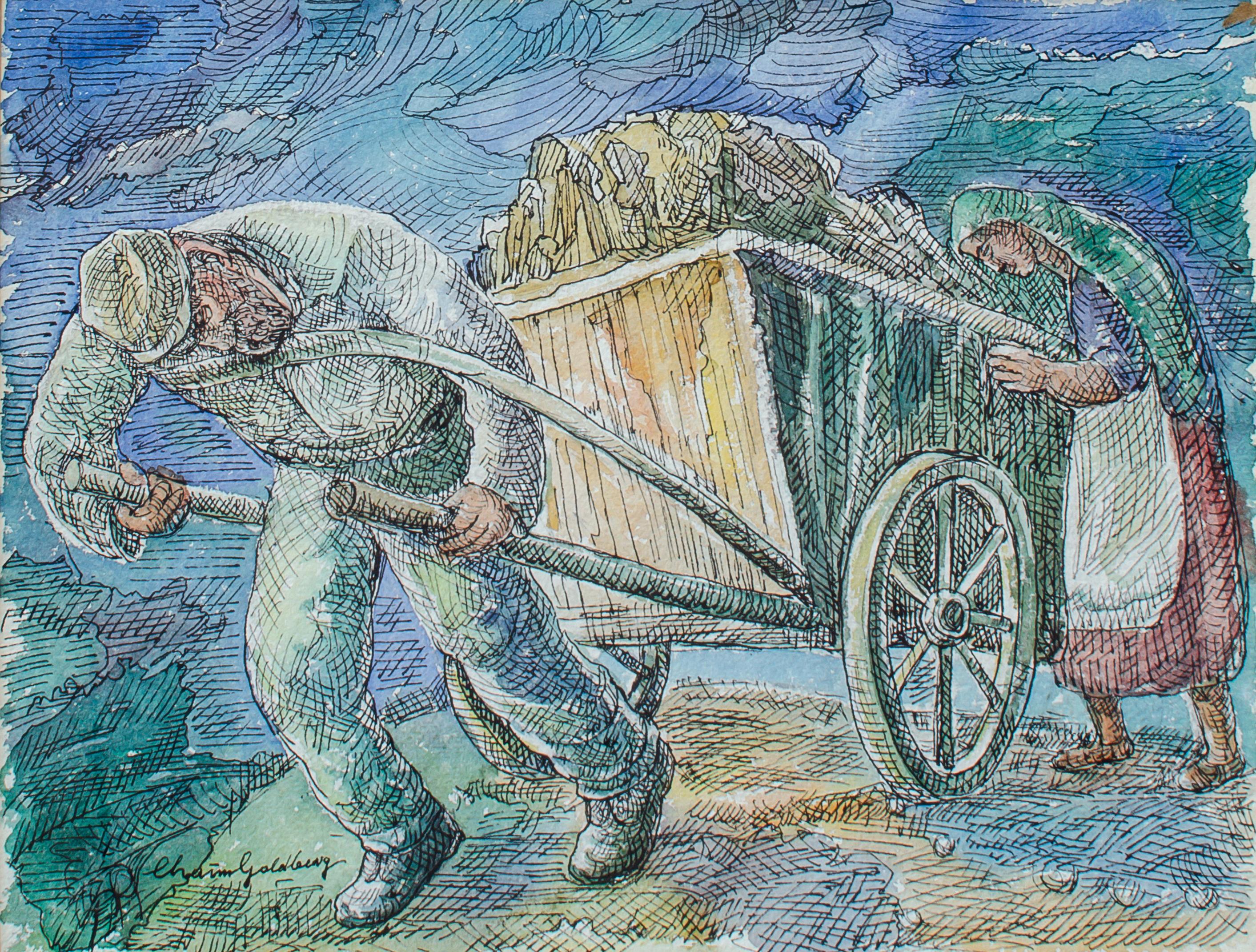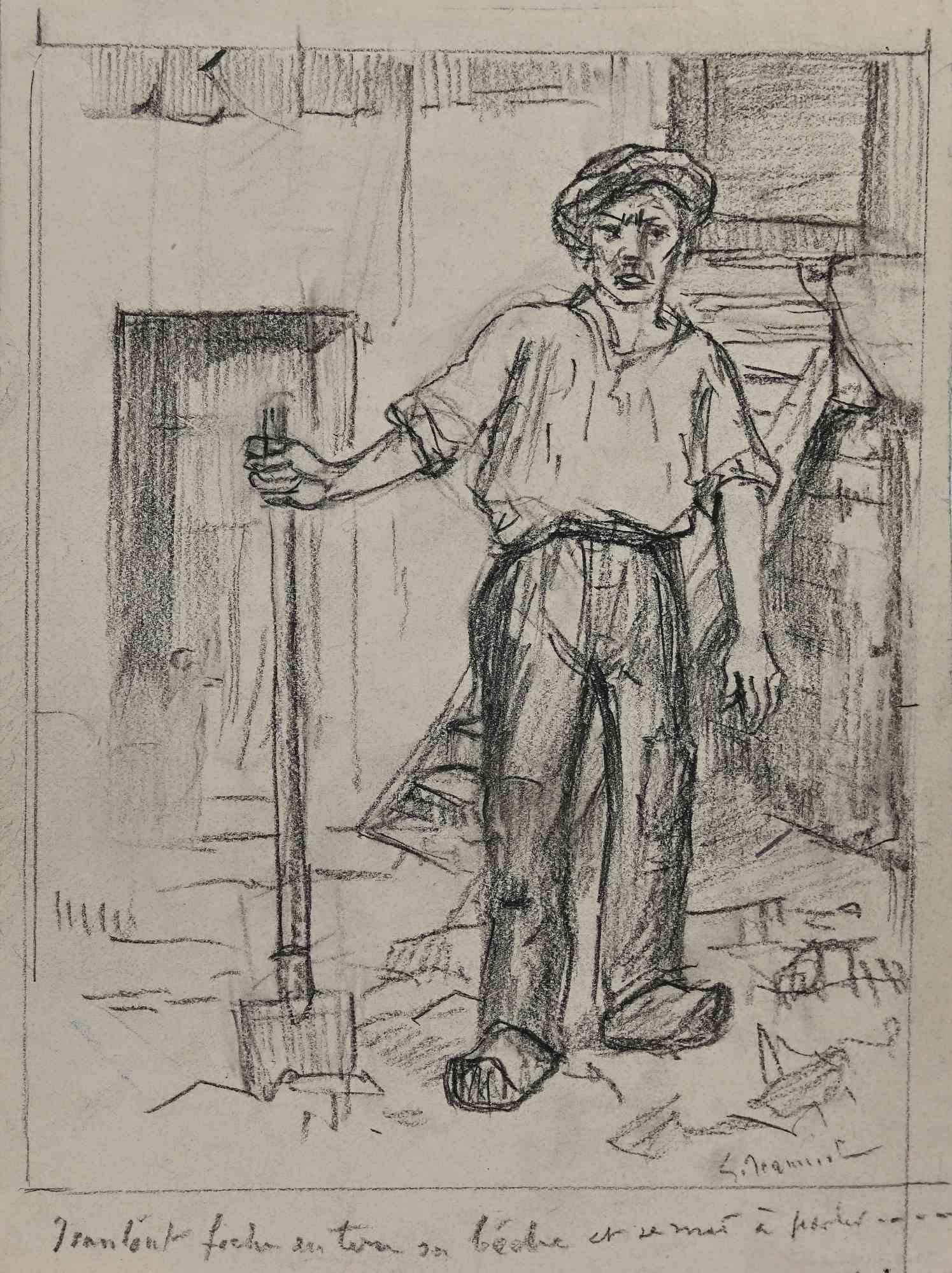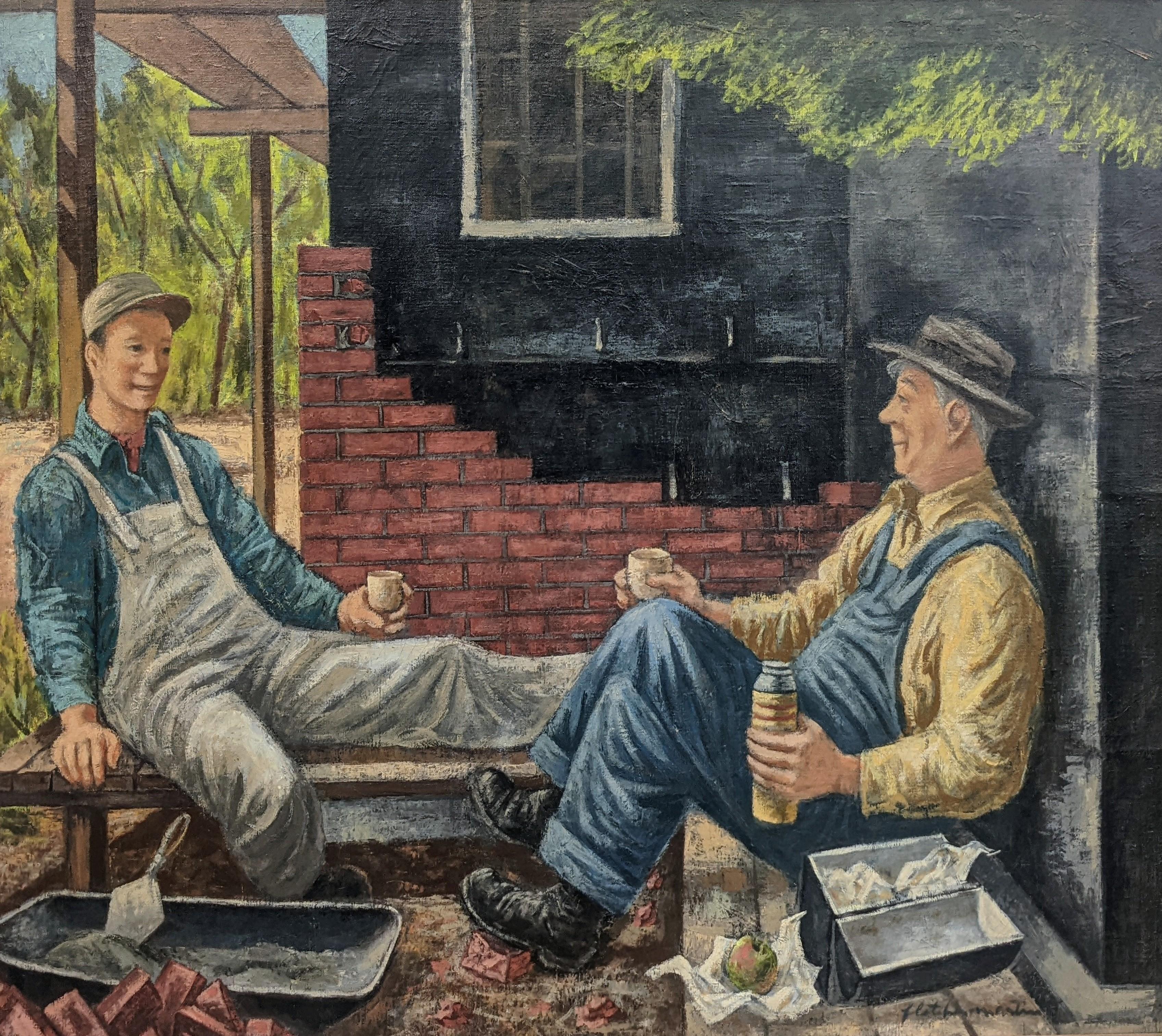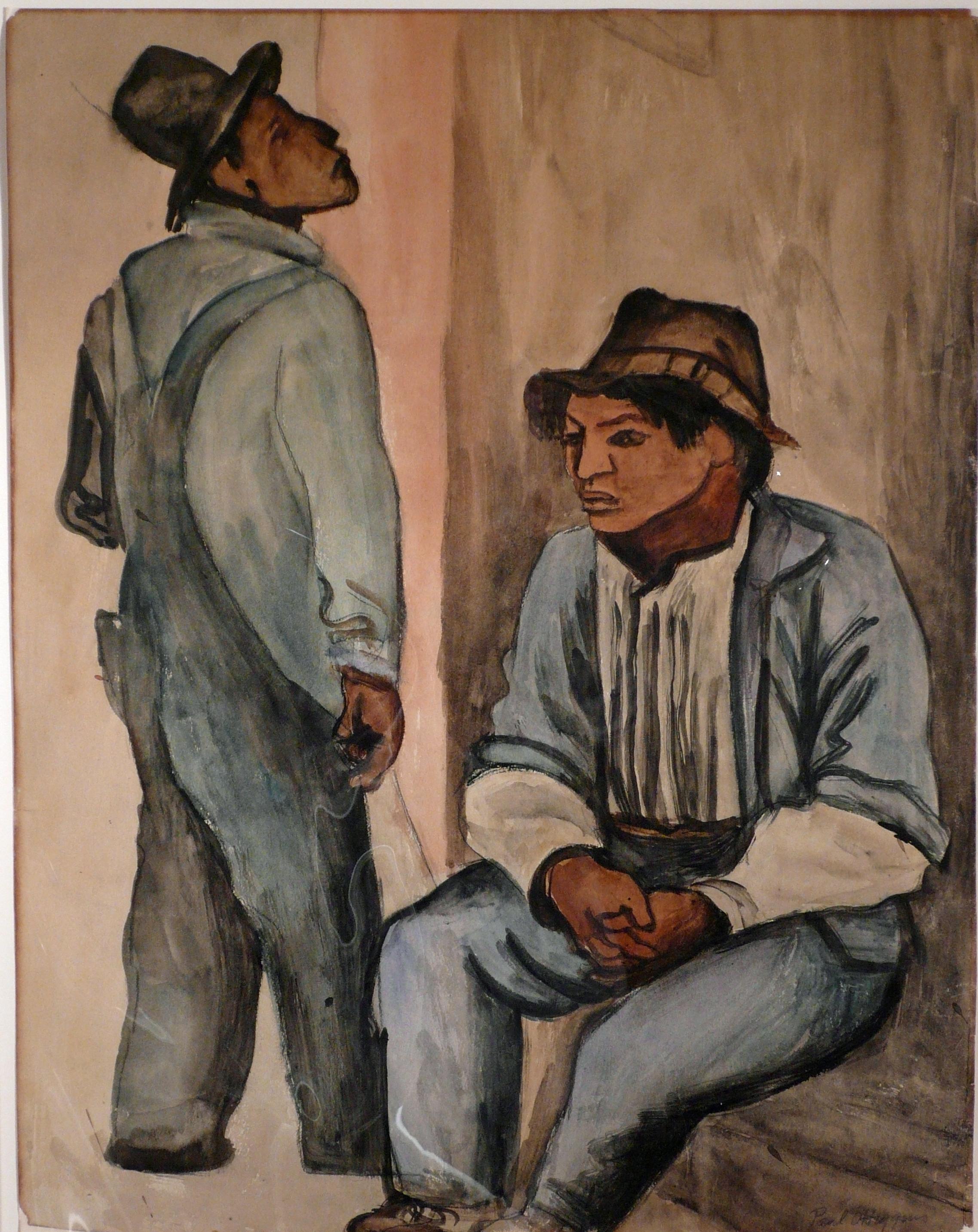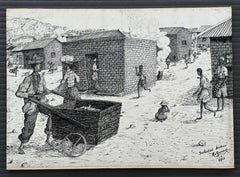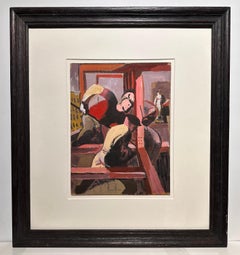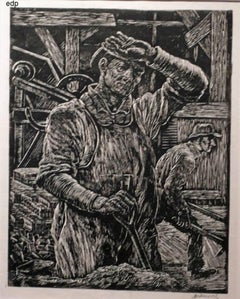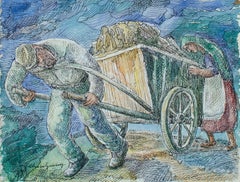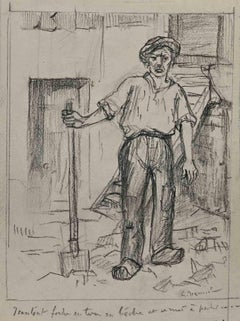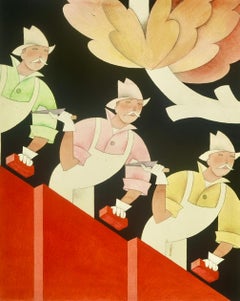Items Similar to The Bricklayer & His Son (Mexican Artist)
Want more images or videos?
Request additional images or videos from the seller
1 of 9
Pablo O'HigginsThe Bricklayer & His Son (Mexican Artist)1946
1946
$300
£226.40
€259.20
CA$423.10
A$464.51
CHF 242.34
MX$5,621.22
NOK 3,037.31
SEK 2,861.94
DKK 1,934.83
About the Item
Pablo O'Higgins (1904-1983).
The Bricklayer and His Son, 1946.
Lithographic ink on paper, Sheet measuring 15 x 17 5/8 inches.
Signed in pencil by artist lower right.
Water staining upper right margin.
SHIPS ROLLED IN TUBE
Series: Mexican Art: A Portfolio of People and Places
Medium: Lithograph
Dimensions: 14 x 11 1/4 inches (image) 15 1/8 x 17 5/8 (sheet)
Signature: Signed
Artist details: Mexican/American, 1904 - 1983
Date finished: 1946
Edition: 300
Publisher: Taller de Gráfica Popular and Associated American Artists
Biography:
Pablo Esteban O’Higgins was born in Salt Lake City, Utah in 1904. As a young man O’Higgins began his art education in San Diego, California. During his time in Southern California O’Higgins became fascinated with the mural movement that was taking place in Mexico. His talent for the arts we quickly noticed by his contemporaries and at the age of 20 he was invited to assist Diego Rivera on mural projects within Mexico. This move to Mexico began the artist’s permanent residence in the country that would later adopt him as a citizen.
During Pablo O’Higgins’ time as Diego Rivera’s primary assistant on mural projects, the young artist was privy to a hands-on education of modern Mexican art that proved to be of great influence for the rest of his life. After assisting on a few projects, O’Higgins and Rivera parted ways due to political differences and compounded by O’Higgins’ desire to create his own work. O’Higgins continued to live in Mexico and soon founded the anti-Fascist Taller de Grafica Popular with Leopoldo Mendez (who was later implicated in the murder of Leon Trotsky.) Taller de Grafica Mexicana was created by O’Higgins and Mendez as a vehicle by which to promote the graphic arts and social conscience, to combat racism and to improve the lives of the underprivileged. The politics of the group were advertised through the subject matter of murals that O’Higgins created throughout Mexico as well as in his smaller easel paintings, such as Descansando.
Descansando is a quintessential example of work by Pablo Esteban O’Higgins. The artist painted the people he respected, the ordinary, hard-working campesinos. In Descansando we see two farm workers resting from the mid-day sun. O’Higgins sought to capture the dignity and character of Mexico’s working and indigenous people through his art and does just that in this mid-20th century painting.
While O’Higgins continued to live in Mexico, becoming a citizen of Mexico in 1961, he traveled back to the US on a few occasions. He created two murals in the United States, each in keeping with his politics. The first, The Struggle Against Racial Discrimination, was commissioned by the Shipscalers, Drydock and Miscellaneous Boatyard Workers Union in Seattle in 1945. In the mural, Abraham Lincoln is shown holding a banner that reads, “Uniting all working people of all nations,” and in another panel, workers gather over a document that says, “Build a free world. No masters. No slaves. Workers of the world unite!” The mural has been moved and restored and is now installed at the University of Washington.
O’Higgins’ other mural in the United States, Solidaridad Sindical, was commissioned by the International Longshore and Warehouse Union in Honolulu, Hawaii. This three-story mural celebrates the ascendancy of sugar plantation unions to power. Painted in the 1952 and still on view in the ILWU offices, this mural tells the story of oppression, struggle and victory of Hawaii’s working people and serves as an inspiration to the ILWU members who improved working conditions through union representation. Both of these grand works promote union solidarity and empower the worker.
O’Higgins was the only non-native Mexican whose work was included in the first large exhibition of Mexican art in the Unites States, Twenty Centuries of Mexican Art, which took place at New York’s MoMA in 1940. Following this ground-breaking exhibition, O’Higgins’ work was included in major shows of Mexican art throughout the United States and England. The artist also received accolades from the Mexican government and was awarded with a retrospective of his work at El Palacio de Bellas Artes. His work was positively recognized because of his ability to capture the character of Mexico’s working and indigenous people. The powerful and emotional lines in his canvases, murals and prints show the artist’s admiration and love for Mexico and her people. In 1983 the artist died in Mexico City. His life was celebrated and his funeral was organized by El Palacio de Bellas Artes. Pablo O’Higgins is buried in Nuevo Leon, Mexico.
- Creator:Pablo O'Higgins (1904 - 1983, American)
- Creation Year:1946
- Dimensions:Height: 17.63 in (44.79 cm)Width: 15 in (38.1 cm)
- Medium:
- Movement & Style:
- Period:
- Condition:
- Gallery Location:Wilton Manors, FL
- Reference Number:1stDibs: LU245216505922
About the Seller
4.9
Platinum Seller
Premium sellers with a 4.7+ rating and 24-hour response times
Established in 2007
1stDibs seller since 2015
420 sales on 1stDibs
Typical response time: 2 hours
- ShippingRetrieving quote...Shipping from: Wilton Manors, FL
- Return Policy
Authenticity Guarantee
In the unlikely event there’s an issue with an item’s authenticity, contact us within 1 year for a full refund. DetailsMoney-Back Guarantee
If your item is not as described, is damaged in transit, or does not arrive, contact us within 7 days for a full refund. Details24-Hour Cancellation
You have a 24-hour grace period in which to reconsider your purchase, with no questions asked.Vetted Professional Sellers
Our world-class sellers must adhere to strict standards for service and quality, maintaining the integrity of our listings.Price-Match Guarantee
If you find that a seller listed the same item for a lower price elsewhere, we’ll match it.Trusted Global Delivery
Our best-in-class carrier network provides specialized shipping options worldwide, including custom delivery.More From This Seller
View AllBottle Bag (Lady Selborne, Pretoria, South Africa)
Located in Wilton Manors, FL
Tshidiso Andrew Motjuoadi (1935-1968) Bottle Bag (A Penny for a Bottle). 1963. Ink on handmade paper laid down on plywood board, panel measures 20.5 x 28.75 inches. Signed and dated ...
Category
Mid-20th Century Realist Landscape Drawings and Watercolors
Materials
Ink, Archival Paper
Construction Scene Industrial Cityscape
Located in Wilton Manors, FL
Joseph Kardonne (1911-1985). Construction Scene, 1935. Gouache on cardboard, panel measures 9 x 11 inches; 19 x 21 inches framed. Signed, dated lower c...
Category
Mid-20th Century Cubist Landscape Paintings
Materials
Watercolor
$900 Sale Price
55% Off
Outdoor Market WPA sketch
Located in Wilton Manors, FL
David Margolis (b.1911). Outdoor Market, ca. 1935. Charcoal on paper, image measures 7 x 9.5 inches. Framed measurement 13 x 15.5 inches. Signed lower right.
David Margolis (Septem...
Category
1930s Realist Figurative Drawings and Watercolors
Materials
Paper, Charcoal
Man in Thought
Located in Wilton Manors, FL
Robert Bliss (1925-1981). Man in Thought, 1964. Graphite on canvas, 11.5 x 46 inches. Signed and dated lower left.
Right piece of basic wood strip frame i...
Category
Mid-20th Century Realist Figurative Drawings and Watercolors
Materials
Canvas, Graphite
Allegory of Defense Industry (figurative male illustration)
By Frank Godwin
Located in Wilton Manors, FL
Frank Godwin (1889-1959). Allegory of Defense Industry, 1919. Oil on canvas. Signed lower right. Image measures 20.75 x 26.25 inches. The canvas measures 24 x 36 inches in total. Ann...
Category
Early 20th Century American Realist Figurative Paintings
Materials
Canvas, Oil
$12,000 Sale Price
40% Off
Newfoundland Canadian Loggers
By James Floyd Clymer
Located in Wilton Manors, FL
James Floyd Clymer (1893-1982), ca.1930. Watercolor and pencil on paper measures 14 x 20 inches. Signed lower margin.
James Floyd Clymer ( 1893-1982 ) known for his Regionalist st...
Category
Early 20th Century Abstract Abstract Paintings
Materials
Watercolor, Rag Paper, Pencil
You May Also Like
UNTITLED (TWO CONSTRUCTION WORKERS WITH BRICKS
By Albert Abramovitz
Located in Portland, ME
Abramovitz, Albert (American, born Latvia, 1879-1963).
UNTITLED (TWO CONSTRUCTION WORKERS WITH BRICKS).
Linoleum cut on wove paper, c. 1930s.
Si...
Category
1930s Figurative Prints
Materials
Linocut
Illustration of Jewish Laborers by Chaim Goldberg
By Chaïm Goldberg
Located in New York, NY
Chaim Goldberg (Polish-American, 1917-2004)
Untitled, 20th century
Ink and gouache on paper
Sight: 11 1/4 x 14 in.
Framed: 19 1/2 x 22 1/4 x 7/8 in.
Signed lower left: Chaim Goldberg...
Category
20th Century Modern Figurative Drawings and Watercolors
Materials
Ink, Paper, Gouache
Worker - Original Drawing By Pierre Georges Jeanniot - Early 20th century
By Pierre Georges Jeanniot
Located in Roma, IT
Worker is an original Drawing on paper realized by the painter Pierre Georges Jeanniot (1848-1934).
Drawing in carbon Pencil.
Hand-signed on the lower.
Good conditions except for ...
Category
Early 20th Century Modern Portrait Drawings and Watercolors
Materials
Pencil
Bricklayers House Beautiful Cover Proposal American Scene Modern 1930s Workers
By Antonio Petruccelli
Located in New York, NY
Bricklayers House Beautiful Cover Proposal American Scene Modern WPA 1930s Industrial Workers
Antonio Petruccelli (1907 - 1994)
Brick Layers
House Beautiful cover proposal, c. 1939
...
Category
1930s American Modern Figurative Paintings
Materials
Gouache, Board
"Lunch Break” Fletcher Martin, Men Working, Bricklayers, WPA, American Scene
By Fletcher Martin
Located in New York, NY
Fletcher Martin
Lunch Break, circa 1940
Signed lower right
Oil on canvas
31 1/2 x 37 3/8 inches
When Fletcher Martin died in 1979, the New York Times entitled his obituary “Artist o...
Category
1940s American Realist Landscape Paintings
Materials
Canvas, Oil
UNTITLED (TWO MEN)
By Pablo O'Higgins
Located in Portland, ME
O'Higgins, Paul or Pablo (Mexican, born USA, 1904-1983). UNTITLED DRAWING (TWO MEN).
Watercolor on paper, not dated. Signed "Paul O'Higgins," lower right, so ...
Category
Mid-20th Century Figurative Drawings and Watercolors
Materials
Watercolor
More Ways To Browse
Modern Mexican Art
Paper Art Mexico
Dali Obsession Of The Heart
Dali Playing Cards
Dali Purgatory 4
Dali Shakespeare
Dali Shoes
Dali Sodomites
Dali Statue
Dali The Golden Age
Dali Woodblock
Daumier Etchings
David Hockney 1984 Olympic
David Hockney Paper Pools
David Hockney Yves Marie
David Shrigley Black Cats
Drew Straker
Egon Schiele Posters
